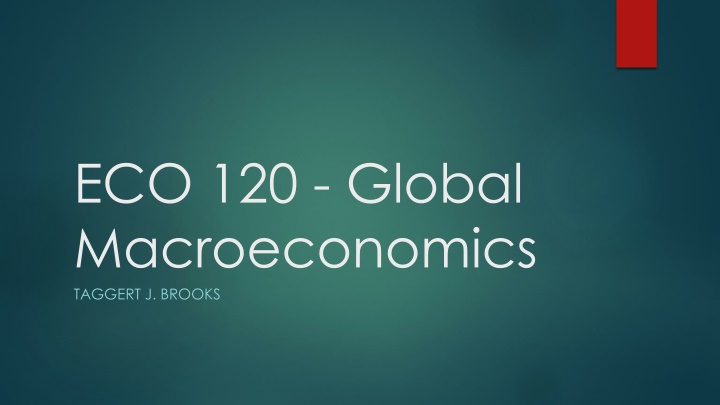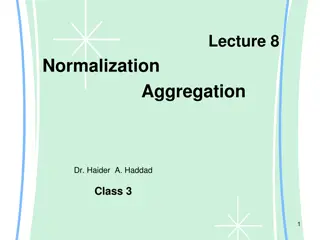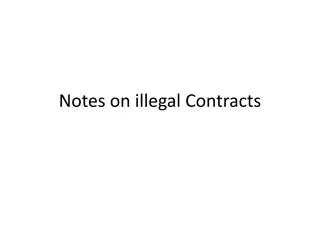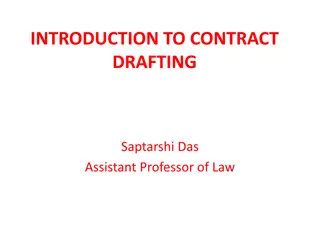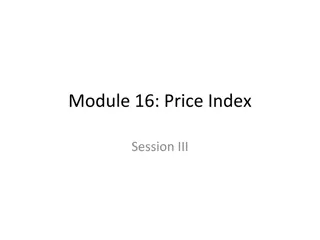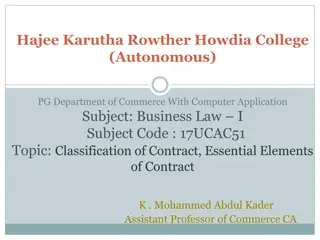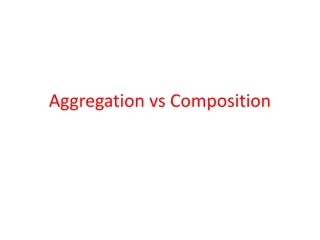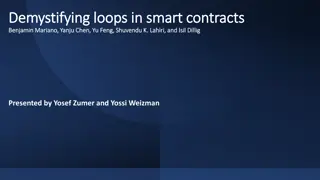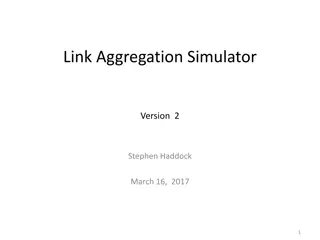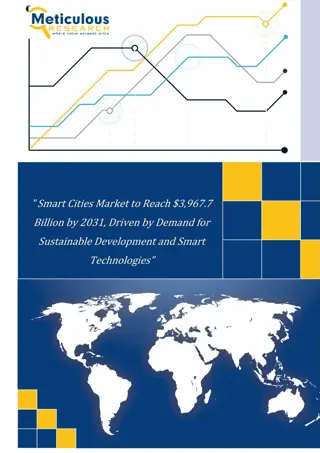Smart Contracts for Information Aggregation in Economics
Smart contracts play a vital role in replicating market functions and information aggregation in economics. This study by Jiasun Li, an Assistant Professor of Finance at George Mason University, delves into how smart contracts can mimic the functions of traditional markets like Uniswap and Bancor. Exploring the nexus of contracts versus markets, the research emphasizes the significance of efficient information aggregation via smart contracts. Through a series of analogies and illustrations, the study sheds light on how groups of traders or investors with private signals can utilize smart contracts to aggregate information effectively.
Download Presentation

Please find below an Image/Link to download the presentation.
The content on the website is provided AS IS for your information and personal use only. It may not be sold, licensed, or shared on other websites without obtaining consent from the author.If you encounter any issues during the download, it is possible that the publisher has removed the file from their server.
You are allowed to download the files provided on this website for personal or commercial use, subject to the condition that they are used lawfully. All files are the property of their respective owners.
The content on the website is provided AS IS for your information and personal use only. It may not be sold, licensed, or shared on other websites without obtaining consent from the author.
E N D
Presentation Transcript
ECO 120 - Global Macroeconomics TAGGERT J. BROOKS
Module 35 HISTORY AND ALTERNATIVE VIEWS OF MACROECONOMICS
Classical Macroeconomics Classical macroeconomics asserted that monetary policy affected only the aggregate price level, not aggregate output. Classical macroeconomics asserted that the short run was unimportant. According to the classical model, prices are flexible, making the aggregate supply curve vertical even in the short run.
Classical Macroeconomics As a result, an increase in the money supply leads, other things equal, to an equal proportional rise in the aggregate price level, with no effect on aggregate output. Increases in the money supply lead to inflation, and that s all.
Classical Macroeconomics By the 1930s, measurement of business cycles was a well-established subject, but there was no widely accepted theory of business cycles.
The Great Depression and the Keynesian Revolution In 1936, Keynes presented his analysis of the Great Depression his explanation of what was wrong with the economy s alternator in a book titled The General Theory of Employment, Interest, and Money. The school of thought that emerged out of the works of John Maynard Keynes is known as Keynesian economics.
The Great Depression and the Keynesian Revolution Keynesian economics reflected two innovations: Short-run effects of shifts in aggregate demand on aggregate output. Keynes argued that other factors than money are mainly responsible for business cycles.
Classical versus Keynesian Macroeconomics
Policy to Fight Recessions The main practical consequence of Keynes s work was that it legitimized macroeconomic policy activism the use of monetary and fiscal policy to smooth out the business cycle.
End of Great Depression The basic message many of the young economists who adopted Keynes s ideas in the 1930s took from his work was that economic recovery requires aggressive fiscal expansion deficit spending on a large scale to create jobs. And that is what they eventually got, but it wasn t because politicians were persuaded. Instead, what happened was a very large and expensive war, World War II.
End of Great Depression The previous figure shows the U.S. unemployment rate and the federal budget deficit as a share of GDP from 1930 to 1947. As you can see, deficit spending during the 1930s was on a modest scale. In 1940, as the risk of war grew larger, the United States began a large military buildup, and the budget moved deep into deficit. After the attack on Pearl Harbor on December 7, 1941, the country began deficit spending on an enormous scale.
Challenges to Keynesian Economics Monetarism asserted that GDP will grow steadily if the money supply grows steadily. It called for a shift from monetary policy rule to that of a discretionary monetary policy. It argued that GDP would grow steadily if the money supply grew steadily. Monetarism was influential for a time, but was eventually rejected by many macroeconomists.
Monetarism When the central bank changes interest rates or the money supply based on its assessment of the state of the economy, it is engaged in discretionary monetary policy. A monetary policy rule is a formula that determines the central bank s actions. The velocity of money is the ratio of nominal GDP to the money supply. The velocity equation: M V = P Y
Monetarism Monetarists believed that V was stable, so they believed that if the Federal Reserve kept M on a steady growth path, nominal GDP would also grow steadily.
Inflation and the Natural Rate of Unemployment The natural rate of unemployment is also the non- accelerating-inflation rate of unemployment, or NAIRU. According to the natural rate hypothesis, because inflation is eventually embedded into expectations, to avoid accelerating inflation over time the unemployment rate must be high enough that the actual inflation rate equals the expected inflation rate.
Inflation and the Natural Rate of Unemployment The natural rate hypothesis limits the role of macroeconomic policy in stabilizing the economy. The goal is not to seek a permanently lower unemployment rate, but to keep it stable The natural rate hypothesis became almost universally accepted.
The Political Business Cycle A political business cycle results when politicians use macroeconomic policy to serve political ends. Fear of a political business cycle led to a consensus that monetary policy should be insulated from politics.
Rational Expectations, Real Business Cycles, and New Classical Macroeconomics New classical macroeconomics is an approach to the business cycle. It returns to the classical view that shifts in the aggregate demand curve affect only the aggregate price level, not aggregate output.
Rational Expectations Rational expectations is the view that individuals and firms make decisions optimally, using all available information. The idea of rational expectations did serve as a useful caution for macroeconomists who had become excessively optimistic about their ability to manage the economy.
Real Business Cycle Theory According to new Keynesian economics, market imperfections can lead to price stickiness for the economy as a whole. Real business cycle theory says that fluctuations in the rate of growth of total factor productivity cause the business cycle.
